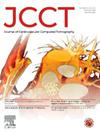Predicting categories of coronary artery calcium scores from chest X-ray images using deep learning
IF 5.8
2区 医学
Q1 CARDIAC & CARDIOVASCULAR SYSTEMS
引用次数: 0
Abstract
Background
The coronary artery calcium (CAC) score (CACS) is recommended in clinical guidelines for coronary artery disease evaluation. However, it is being replaced by coronary computed tomography angiography as the primary diagnostic tool for patients with stable chest pain. This study aimed to develop and validate a deep learning model for predicting the CACS categories from chest X-ray radiographs (CXRs).
Methods
We included 10,230 patients with available CXRs and CACSs obtained within six months. Three models were trained based on the CACS thresholds (0, 100, and 400) to distinguish zero from non-zero CACSs, CACSs of <100 and ≥ 100, and CACS of <400 and ≥ 400. The final CXR integration models incorporating clinical factors, including age, sex, and body mass index, were also trained. All models were evaluated using 10-fold cross-validation. External validation was also performed. We experimentally demonstrated the prognostic value of the predicted CACS for major adverse cardiovascular events, comparing it to the actual CACS classification.
Results
The CACS classification performance of the deep learning model was promising, with areas under the curve (AUCs) of 0.74 (zero vs non-zero), 0.75 (<100 vs. ≥100), and 0.79 (<400 vs. ≥400). The accuracy of the model further improved upon the integration of clinical factors; the AUCs reached 0.77, 0.79, and 0.82, respectively, for the same CACS categories. The external validation results were consistent (AUCs of 0.78, 0.79, and 0.81, respectively).
Conclusions
The deep learning model effectively classified the CACS from CXRs, especially for cases of severe calcification. This approach can cost-effectively improve coronary artery disease risk assessment and support clinical decision-making while minimizing radiation exposure.
利用深度学习从胸部x光图像预测冠状动脉钙评分类别。
背景:冠状动脉钙化(CAC)评分(CACS)是临床指南推荐的冠状动脉疾病评估方法。然而,它正被冠状动脉计算机断层扫描血管造影取代,成为稳定型胸痛患者的主要诊断工具。本研究旨在开发并验证一种深度学习模型,用于预测胸部X光片(CXR)中的CACS类别:我们纳入了 10,230 名在六个月内获得 CXR 和 CACS 的患者。根据 CACS 阈值(0、100 和 400)训练了三个模型,以区分零和非零 CACS、CACS 的结果:深度学习模型的 CACS 分类性能良好,曲线下面积(AUC)分别为 0.74(零与非零)、0.75(结论:深度学习模型能有效地对 CACS 进行分类:深度学习模型能有效地对 CXR 中的 CACS 进行分类,尤其是对严重钙化的病例。这种方法可以经济有效地改善冠状动脉疾病风险评估,支持临床决策,同时最大限度地减少辐射暴露。
本文章由计算机程序翻译,如有差异,请以英文原文为准。
求助全文
约1分钟内获得全文
求助全文
来源期刊

Journal of Cardiovascular Computed Tomography
CARDIAC & CARDIOVASCULAR SYSTEMS-RADIOLOGY, NUCLEAR MEDICINE & MEDICAL IMAGING
CiteScore
7.50
自引率
14.80%
发文量
212
审稿时长
40 days
期刊介绍:
The Journal of Cardiovascular Computed Tomography is a unique peer-review journal that integrates the entire international cardiovascular CT community including cardiologist and radiologists, from basic to clinical academic researchers, to private practitioners, engineers, allied professionals, industry, and trainees, all of whom are vital and interdependent members of our cardiovascular imaging community across the world. The goal of the journal is to advance the field of cardiovascular CT as the leading cardiovascular CT journal, attracting seminal work in the field with rapid and timely dissemination in electronic and print media.
 求助内容:
求助内容: 应助结果提醒方式:
应助结果提醒方式:


